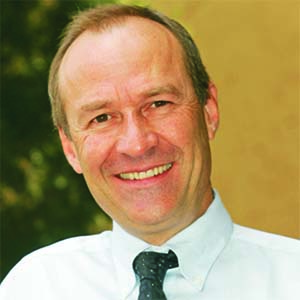Fernando Alonso – world champion in 2005 and ’06 – wants to be seen as a “complete” racing driver. This means competing successfully in events other than Formula One, as did the top drivers of bygone eras.
 By Graham Duxbury
By Graham Duxbury
His objective is to secure motorsport’s unofficial “holy grail” – the Triple Crown.
The Triple Crown has come to represent wins at the three most prestigious motor racing events; the Monaco Grand Prix, LeMans 24-hour race and Indianapolis 500.
Each event presents its own unique challenges and demands a distinctive approach.
Monaco, for example, is arguably the toughest street circuit on the F1 calendar. It demands precision driving and ultimate concentration. A win in the Principality is among F1’s most-prized rewards. Alonso ticked this box in 2006 – and again in 2007.
LeMans is the world’s oldest active sports car race and one of the most gruelling. Held annually since 1923 it has been called the “Grand Prix of Endurance and Efficiency”. Drivers need to balance outright speed with mechanical empathy and an ability to optimise fuel efficiency. Alonso met this challenge and won – at his first attempt – earlier this year.
The Indianapolis 500, run annually on Memorial Day in the US, is attended by more than 300 000 spectators making it one of the world’s largest one-day sporting events. Steeped in history – the inaugural Indy 500 was held in 1911 – the speedway represents the pinnacle of single seater, oval track racing in America.
An ability to “read” the four seemingly-similar left-hand turns and maximise each while racing at close quarters at speeds over 360km per hour are key driver requirements.
Alonso is yet to win the Indy 500, after suffering a mechanical failure while contending for the lead in 2017.
With two out of the three challenges checked off Alonso’s “to-do” list, the quest to become a complete driver “comes into play with a high priority”, he says.
While he has still to make his decision public, it is most likely that Alonso will leave F1 and focus on IndyCar racing in 2019. He will also likely have the blessing and support of his McLaren team. Word is, the Woking-based outfit is considering its own IndyCar programme for 2019, maybe partnering Fernando with multiple IndyCar champion and Indy 500 winner Scott Dixon.
There are suggestions that Kimi Raikkonen could be drafted in as a high-profile replacement for Fernando in the McLaren F1 squad, alongside either Stoffel Vandoorne or Lando Norris.
Following a successful IndyCar season, Alonso will most likely return to F1 when, hopefully, McLaren will have ironed out its current wrinkles. Assuredly, Alonso will not happily endure another year in F1’s midfield.
A key question is, will he be able to make a triumphant return to F1 after a year away? At 37 years of age, time is against the two-time champion. This is probably Fernando’s last realistic opportunity to win the Triple Crown and then come back to F1 with a chance to fight for more race wins and maybe a third title.
Successful comebacks have been achieved before. Alain Prost (the 1985, ’86 and ’89 champion) took time off from F1 in 1991 after leaving Ferrari under a cloud. He was fired for publicly criticising the team. With no time to find another drive, the French champion spent 1992 on the side-lines, as a TV commentator, before returning in ‘93 with Williams to win seven more races and take his fourth world championship title at age 38.
Niki Lauda (world champion in 1975 and 1976) impetuously left the Brabham team in mid-1979. He returned in 1982 with McLaren and won his third race back before going on to claim his third world championship in 1984, age 35.
After winning two titles, in 1969 and 1971, Jackie Stewart took the best part of 1972 off due to illness. He returned to win this third title in 1973, his final year in the sport. He retired at 35.
Other champions have returned to win F1 races again after taking time out, including Nigel Mansell, Mario Andretti and Kimi Raikkonen. However, the acclaimed seven-time champion and former Ferrari mega-star, Michael Schumacher, wasn’t so fortunate. He left Mercedes-Benz winless after a three-year comeback, retiring for the final time at 43.
